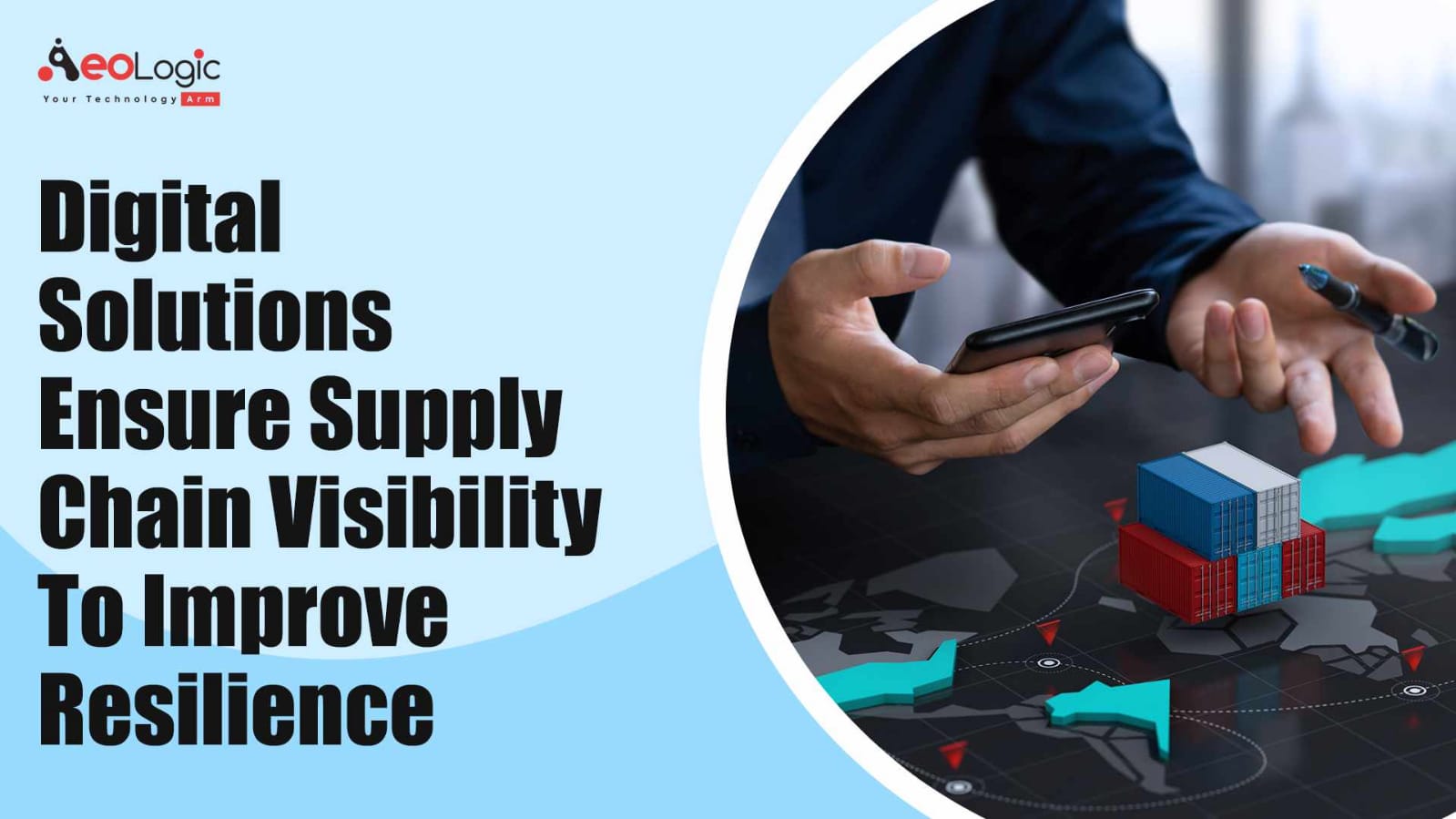In the wake of the COVID-19 pandemic, many businesses have been forced to re-evaluate their supply chains. The pandemic has highlighted the importance of having a resilient supply chain, one that is able to adapt to changing conditions. Digital solutions can help businesses achieve visibility into their supply chains so that they can make necessary changes to improve resilience. So, let’s go into deep to understand how digital solutions ensure supply chain visibility to improve resilience.
Let’s begin!
In the digital age, supply chains are evolving at rapid speeds that can have an impact on your business. A digital solution in supply chain visibility gives you the ability to keep track of what’s happening in real-time.
Digital solutions are revolutionizing the way companies operate. They enable businesses to deliver their products and services to consumers faster, cheaper, and more efficiently. In fact, today’s digital businesses employ a number of different tools to achieve these goals — everything from smartphone applications to tablets and desktops to cloud computing platforms. The wide range of digital products and services available today, however, has a downside: responding to business requests for information can be challenging for your company if you don’t have a centralized system in place. That’s where supply chain visibility comes in by providing an efficient means of collecting, organizing, analyzing, and reporting data on all your productions — without having to hire dedicated staff to develop this kind of system from scratch.
Also Read: How is the Cloud Computing Shaping Healthcare Industry?
What is a Digital Solution in Supply Chain Visibility?
A digital solution in supply chain visibility is a technology that allows companies to monitor their supply chains. Digital solutions are often used by large companies, as they can provide a lot of information about the status of their supply chains. This data can be used to help make business decisions, such as when they need to buy more inventory or when they should schedule production.
Companies use digital solutions because they are cheaper than other types of systems, like paper-based tracking systems or RFID tags that require batteries. However, these systems have some drawbacks. For example, if there is an error in one system, it may affect multiple systems in different ways.
What Is Supply Chain Resilience?
Supply chain resilience is the ability to continue operating in a crisis. It is a result of having an appropriate supply chain management plan, which includes the right people, processes, and technology in place. A primary goal is to reduce downtime and to ensure that commodities are ready for the market.
Supply chain resiliency ensures timely and effective product delivery. In order to achieve this, companies must be able to monitor their supply chains in real-time so that they can identify any issues before they become problems.
Digital Transformation Provides a Path to Resiliency
Digital transformation is providing a path to resiliency for many organizations across the globe. By digitizing supply chains, organizations are able to increase transparency and collaboration, leading to improvements in operational efficiencies. In addition, digital solutions can help organizations quickly adapt to changes in demand and disruption in the supply chain. As the world becomes more connected, digital solutions will continue to play a vital role in ensuring supply chain visibility. And now it is continuously improving resilience.
Also Read: The Role of Technology in Disaster Management
Key Considerations when Digitizing the Supply Chain
As the COVID-19 pandemic continues to wreak havoc on businesses around the globe, many organizations are looking for ways to improve the resilience of their supply chains. One key way to do this is to digitize the supply chain in order to gain visibility into all aspects of the operation.
There are many factors to consider when digitizing the supply chain, but some key considerations include:
- Identify and track all assets: In order to gain visibility into the supply chain, it is important to first identify and track all assets involved in the operation. This includes everything from raw materials and finished goods to vehicles and equipment. By tracking these assets, organizations can more easily locate bottlenecks and potential problems.
- Deploy sensors and tracking devices: Once all assets have been identified, sensors and tracking devices can be deployed throughout the supply chain. In order to enhance visibility and optimize operations, these gadgets will deliver real-time data.
- Implement an enterprise resource planning (ERP) system: An ERP system can help organizations manage all aspects of the business, including the supply chain. By integrating all data into a single platform, businesses can more easily track progress and make necessary decisions.
6 Strategies for a More Resilient Supply Chain
A more resilient supply chain is one that can adapt to changing conditions and still maintain efficiency. In today’s business environment, that means having visibility into the entire supply chain so that disruptions can be quickly identified and remedied.
Digital solutions are playing an increasingly important role in achieving this visibility. For example, tracking devices can be placed on shipments so that their location is always known. This information can then be fed into a digital dashboard that gives managers a real-time view of the supply chain.
Another digital solution that is gaining popularity is the use of blockchain technology. Blockchain provides a secure and transparent way to track transactions and other data throughout the supply chain. Using this data, you can spot possible problems as well as areas for progress.
Ultimately, digital solutions are essential for achieving the visibility needed to build a more resilient supply chain. By investing in these solutions, businesses can protect themselves from disruptions and ensure their long-term success.
Strategies
6 Strategies for a More Resilient Supply Chain
- Have a resilient supply chain.
- Make sure you’re using the right technology.
- Analyze your supply chain risks, and build an emergency response plan.
- Use predictive analytics to reduce risk.
- Communicate with your suppliers in advance of potential disruptions.
- Train your management team on how to respond to disruptions.
Also Read: Benefits of Mobile App for Your Retail Business
Conclusion
The purpose of this blog is to provide an overview of supply chain resilience. And also explain how digital solutions can help you improve your company’s resilience. Digital solutions ensure visibility, as well as a way to grow and transform your business. Today’s enhancements to supply chain visibility are fundamental to improving the continuity of your operations and being more ready to face any disruption that could arise. They provide a direct feed between the shop floor and corporate applications. A huge advancement over handwritten orders and people in different countries that cannot speak with other partners. If you have not started using digital solutions yet, now is the time to do so.
In short, digital solutions can provide supply chain resilience and allow organizations to identify and resolve issues where they arise.
Are you looking for a digital solution that can provide supply chain resilience for your business, connect with Aeologic Technologies.

I’m Deepika Pandey, an SEO strategist and content writer with 6+ years of experience. I create SEO-friendly content that drives traffic and engages readers. I combine data insights with creativity to help businesses grow their online presence effectively.





